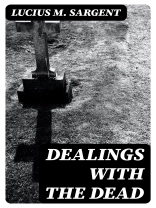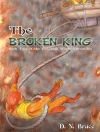In 'Dealings with the Dead, ’ Lucius M. Sargent embarks on a captivating exploration of the macabre, weaving a tapestry of narratives that combine both humor and horror. Through his engaging literary style, Sargent draws readers into a world where the boundaries between life and death are blurred, allowing for a reflection on mortality and the human condition. Infused with the gothic sensibility prevalent in the mid-19th century, the work resonates with themes of social commentary, personal vendettas, and the mysteries surrounding death, delivered with a wit that evokes the absurdity of the subjects he explores. Sargent, a prominent figure in American literature, was known for his satirical tone and his ability to articulate the curiosities and follies of his time. His diverse background as a writer, editor, and humorist provided him with unique insights into the cultural preoccupations of post-Civil War America, particularly the fascination with the occult and spiritualism, influencing the work’s rich narratives about death and its implications for the living. For readers intrigued by the interplay of humor and mortality, 'Dealings with the Dead’ is an essential addition to their literary repertoire. Sargent’s masterful storytelling not only entertains but also invites profound contemplation of life’s ephemeral nature, making it a timeless piece worth revisiting.
O autorze
Lucius Manlius Sargent (1786-1867) was a prominent figure in 19th-century American literature, whose forays into writing were matched by his expertise as a temperance advocate and numismatist. Born in Boston, Massachusetts, Sargent was the son of prominent parents who ensured he received an education befitting their status, thus grooming him for a lifetime of scholarly and cultural achievements. His legacy, however, is most distinctly captured in his literary work, 'Dealings with the Dead’, a collection of macabre and supernatural tales that intimately explores themes of mortality and the afterlife. Sargent’s narrative style in 'Dealings with the Dead’ reflects a gothic sensibility, which was characterized by an emphasis on emotion and a fascination with the morbid aspects of life, firmly rooting him in the literary tradition of the early American gothic movement. Although not as universally recognized as some of his contemporaries, Sargent’s contributions to the genre cannot be overlooked, as they provide insight into the cultural preoccupations with death and the supernatural during his time. While his works may not have the canonical status of some authors from the era, Sargent’s writing still garners attention from scholars interested in the breadth and diversity of early American gothic literature and the various sociocultural concerns it reflects.












